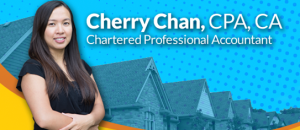The following is a guest post by Gord Davis, a professional Mortgage Agent. Gord specializes in finding creative solutions to difficult financing problems.
1 Get independent advice on your financial options.
As independent mortgage brokers and mortgage agents, we’re not tied to any one lender or range of products. Our goal is to help you successfully finance your home or property. We’ll start by getting to know you and your homeownership goals. We’ll make a recommendation, drawing from available mortgage products that match your needs, and we will decide together on what’s right for you.
2 Save time with one-stop shopping.
It could take weeks for you to organize appointments with competing mortgage lenders — and we know you’d probably rather spend your time house-hunting! We work directly with dozens of lenders, and can quickly narrow down a list of those that suit you best. It makes comparison-shopping fast, easy, and convenient.
3 We negotiate on your behalf.
Many people are uncertain or uncomfortable negotiating mortgages directly with their bank. Brokers negotiate mortgages each and every day on behalf of Canadian homebuyers. You can count on our market knowledge to secure competitive rates and terms that benefit you.
4 More choice means more competitive rates.
We have access to a network of major lenders in Canada, so your options are extensive. In addition to traditional lenders, we also know what’s being offered by credit unions, trust companies, and other sources. And we can help you take care of other requirements before your closing date, such as sourcing mortgage default insurance if your down payment is less than 20% of the purchase price.
5 Ensure that you’re getting the best rates and terms.
Even if you’ve already been pre-approved for a mortgage by your bank or another financial institution, you’re not obliged to stop shopping! Let us investigate to see if there is an alternative to better suit your needs.
6 Get access to special deals and add-ons.
Many financial institutions would love to have you as a client, which is why they often offer incentives to attract creditworthy customers. These can include retail points programs, discounts
on appliances, shopping clubs, and more. We do the math on which offers might be worth your attention when it comes to financing or mortgage insurance — so you get the perks you deserve.
7 Things move quickly!
Our job isn’t done until your closing date goes smoothly. We’ll help ensure your mortgage transaction takes place on time and to your satisfaction.
8 Get expert advice.
When it comes to mortgages, rates, and the housing market, we’ll speak to you in plain language. We can explain the various mortgage terms and conditions so you can choose confidently.
9 No cost to you.
There’s absolutely no charge for our services on typical residential mortgage transactions. How can we afford to do that? Like many other professional services, such as insurance, mortgage brokers are generally paid a finder’s fee when we introduce trustworthy, dependable customers to a financial institution. These fees are quite standard and nearly industry-wide so that the focus remains on you, the customer.
10 Ongoing support and consultation.
Even once your mortgage is signed and paperwork is complete, we are here if you need any advice on closing details or even future referral needs. We are happy to be of assistance when you need it.


